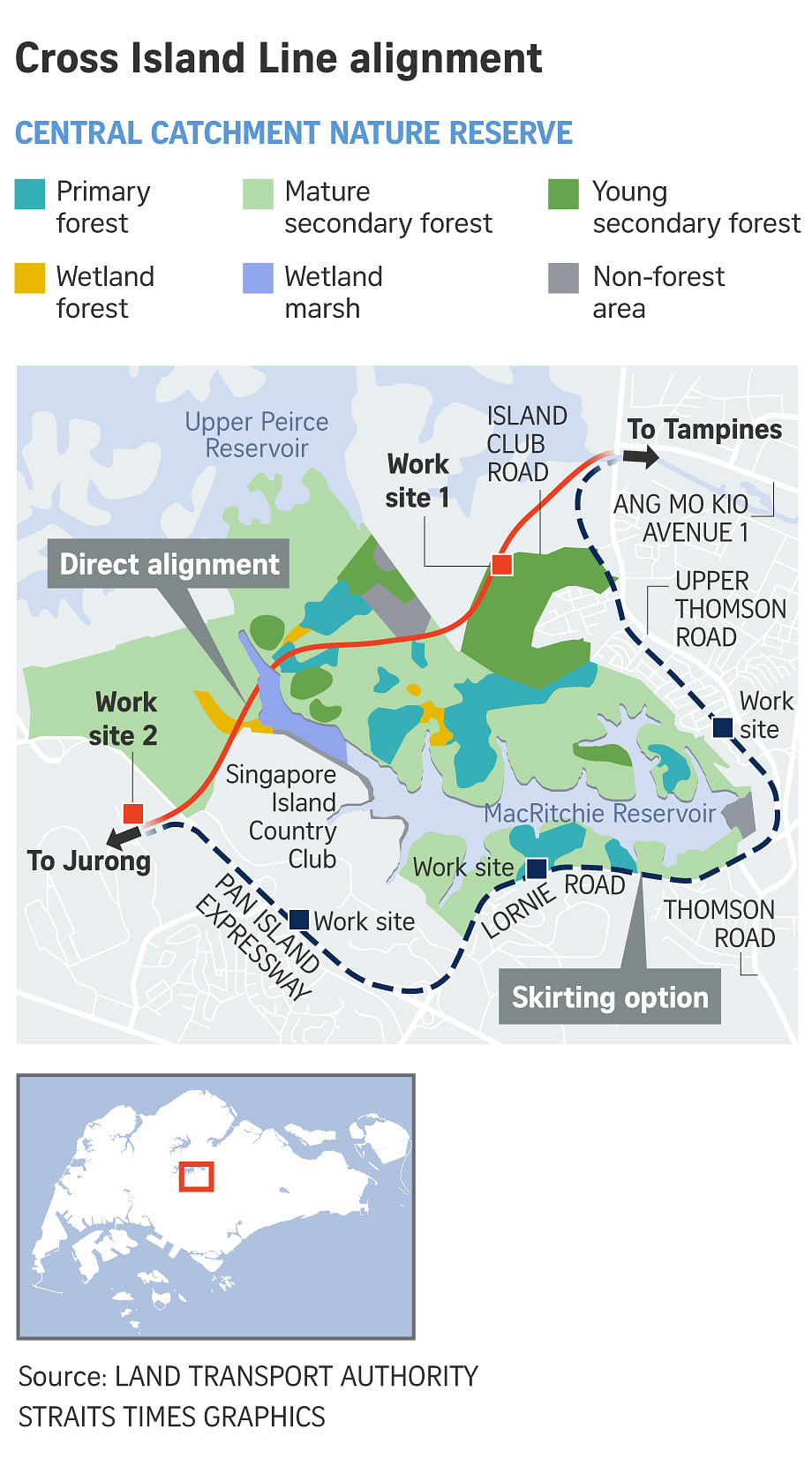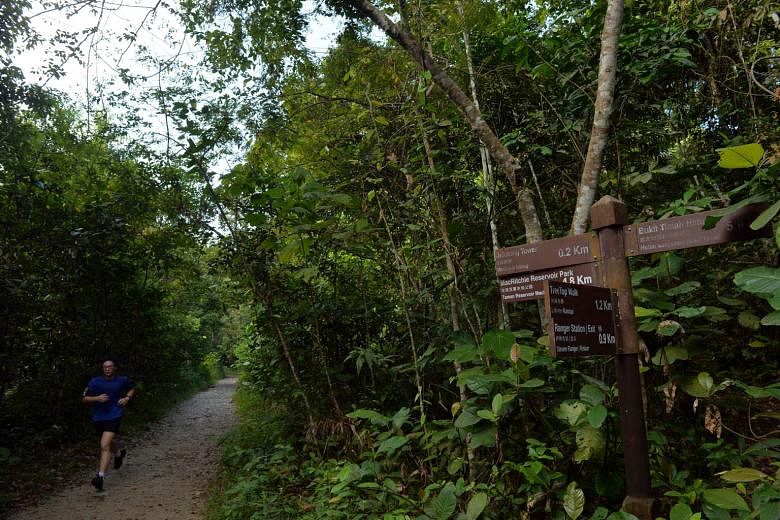Members of nature groups engaged over the Cross Island MRT Line are concerned that the decision to build under Singapore's largest nature reserve could set a precedent for future work in protected areas, even as they acknowledge that measures are being put in place to reduce the impact of works on flora and fauna.
Nature groups and biologists are also disappointed that the line will not skirt the Central Catchment Nature Reserve, instead going under it, and say that the mitigation measures may not be fail-safe.
Asked if the decision would set a precedent for future developments, Senior Minister of State for Transport Lam Pin Min told reporters yesterday that each project will be assessed on a case-by-case basis.
"I think we have to look at each case separately," he said. "For this particular project, we have worked very closely with the nature groups and taken in their input (to reduce environmental impact)."
For example, the tunnel for the Cross Island Line will go 70m under the reserve. This is much deeper than ordinary tunnels, which typically go 20m to 30m underground, said the Ministry of Transport (MOT).
Other concessions have been made by the authorities over the years, including the decision to reduce the number of boreholes drilled in the reserve during preliminary soil tests.
The Cross Island Line, which spans at least 50km, will run from Changi to Jurong, and serve estates such as Pasir Ris, Ang Mo Kio and Clementi. It is expected to have an initial ridership of 600,000 per day when it is completed by 2031.
The line was announced in early 2013, and preliminary plans showed it running under primary and secondary forests in the Central Catchment Nature Reserve.
The nature community, alarmed by the potential environmental harm which the construction and operation of an underground MRT line right across the heart of the reserve could cause, had suggested that the line be built along Lornie Road. This alternative route skirts around the reserve.

The decision on whether the Cross Island Line will go under or around Singapore's largest nature reserve was six years in the making.
It included extensive consultations between the authorities and nature groups - Dr Lam said there were over 40 engagement sessions - which a group of activists noted were constructive "because they were conducted in the spirit of mutual respect". They said: "We have learnt to hear each other out, and we are glad that many of our inputs have been accepted and incorporated."
The MOT said various factors had been considered before it opted for direct alignment - including findings from the environmental study.
The first phase of the study, which looked at the impact of soil works on the flora and fauna of the nature reserve, had determined that preliminary tests could have a "moderate" impact on wildlife if measures to reduce impact were carried out.

The second phase, released earlier this year, looked at the impact of the construction and operation of the line. It also concluded that this impact could be reduced if mitigation measures are carried out.
Biologist N. Sivasothi from the National University of Singapore said he was "naturally very disappointed" at the final outcome, although the engagement process with the authorities had been honest and fruitful over the years.
This engagement had helped to "considerably reduce" the impact of the line on the forest.
"I hope that this type of direct partnership will become the norm, in which we seek common objectives and beyond mitigation of impact alone, contribute towards recovery and rehabilitation of Singapore's ecosystems," said Mr Sivasothi.
Nature Society (Singapore) president Shawn Lum said the nature community had worked with the Government since 2013 "to find a way to achieve national needs", including nature protection and transport infrastructure.
Dr Lum, a botanist, said impact of tunnelling and worksites for the direct line could be kept to a moderate level if mitigation measures are properly implemented, noting that both alignments would have an impact on wildlife and the habitat.
But Herpetological Society of Singapore co-founder Sankar Ananthanarayanan said that while the engagement process has been fruitful and mitigation measures proposed, these may not be fail-safe.
He said: "The full impact of this decision is still unknown and there is a lot on the line. Preserving biodiversity should be a fundamental tenet of our nation building."



